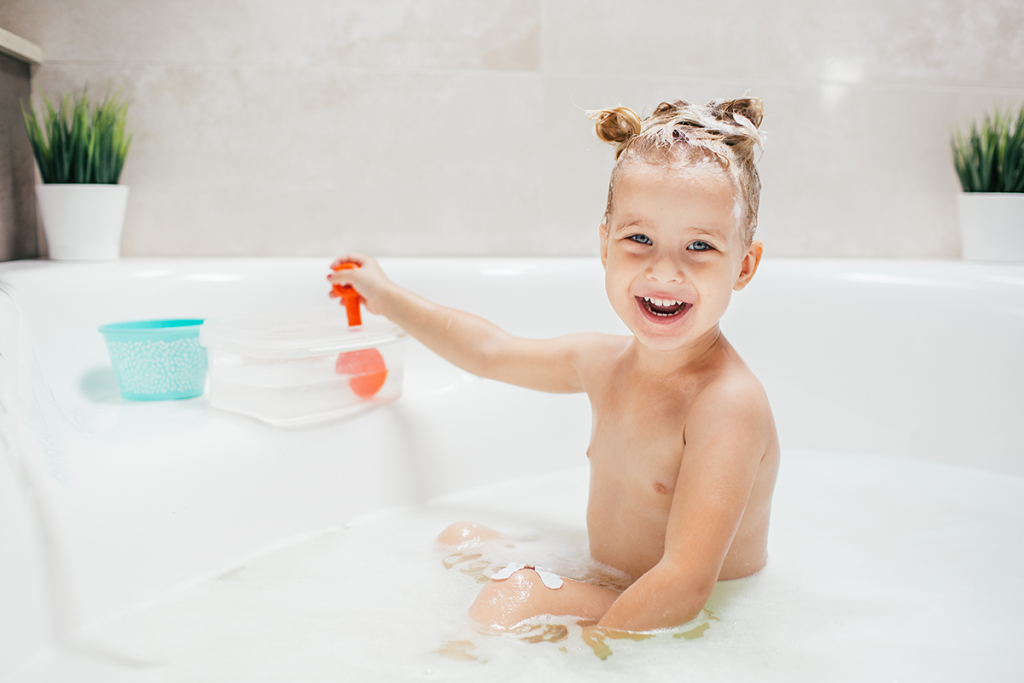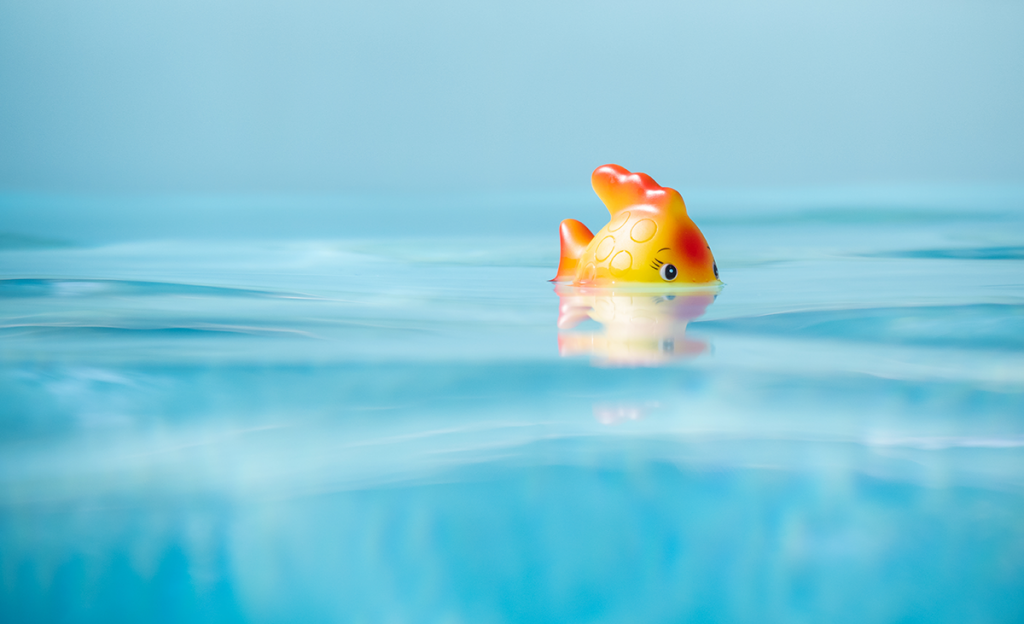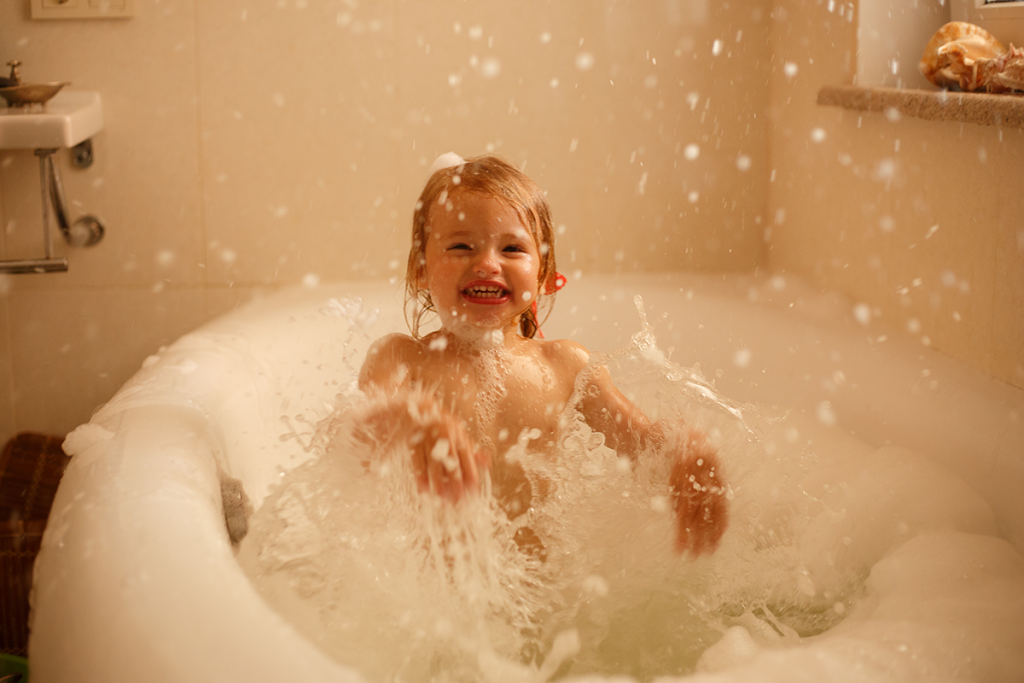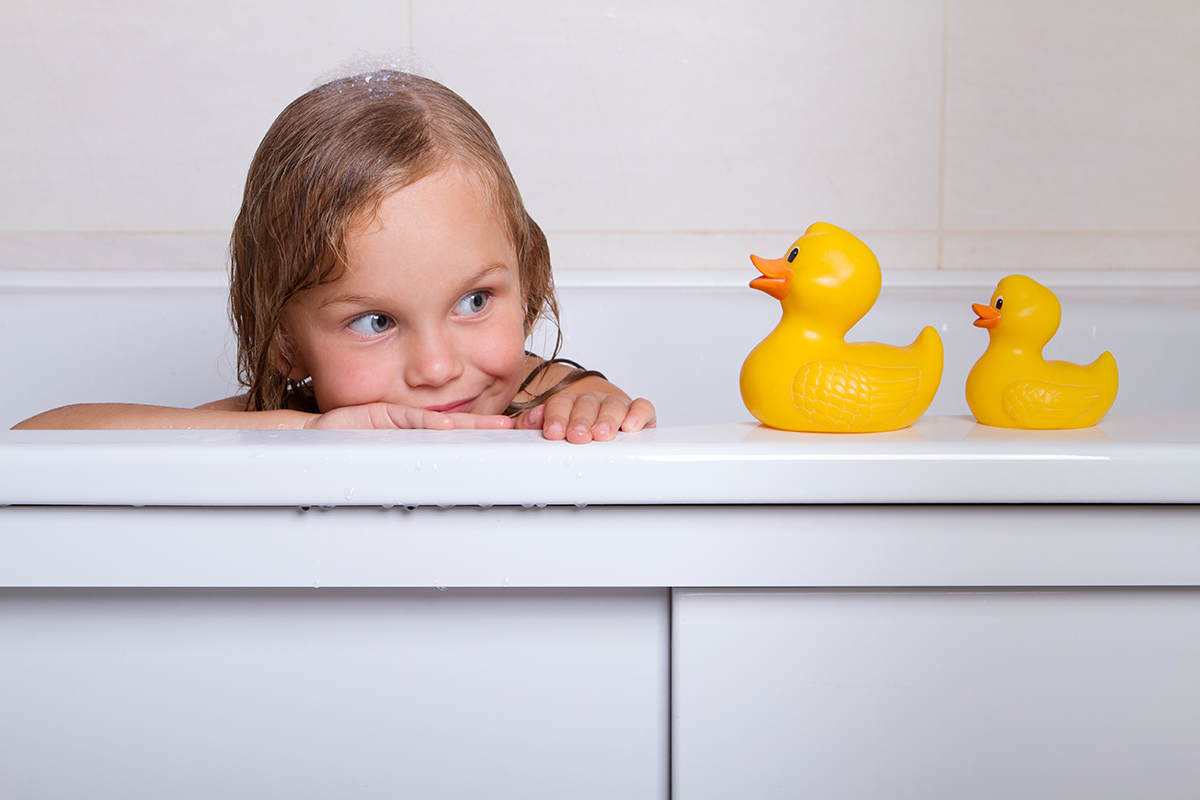With our swimming pools having been closed due to lockdown, the opportunity to work on our swimming skills has been somewhat limited. However, the silver lining in this situation is that there is a whole world of practices perfect for the bath, which can have a huge effect on your children’s swimming abilities once they’re back in the pool. So… taps on!
Breath control is a fundamental component of swimming. It’s one of the first things a swimming teacher will instruct your child on, and they will continue to reinforce it week in, week out, for their entire swimming journey.
There is more to breathing than most of us think. The most obvious skill is to breathe in above the water, and blow out when submerged. However, the variations of this are endless, and working on this with your child during bath time is an excellent way to build and stay on top of their breathing control whilst the pool is a no-go. Also, if your little one is reluctant to submerge their face or mouth in water, the bath is a great place to work towards achieving this too.
Children, invariably, will try things when they look fun. I’m sure you would agree that repeatedly asking a child to do something they don’t want to do, doesn’t work! As a rule of thumb, swimming should feel like something we do with our little ones, rather than something they have to do. Where possible, show them what to do, or see if you can get their siblings or your partner to help!
It should be noted that breathing control practices, at some point, will see your child inhale or snort water. Neither are pleasant feelings and unfortunately, this is part of the journey, just like falling off of a bike. When it happens, the best thing to do is empathise with your child and don’t rush them into trying again until they feel ready.
The activities below are mostly suitable for 3-5 year olds, and are subject to both bath size and child size. Make sure to never leave your children unattended, and of course, no diving or bombing!
1) ‘Shopping’ – breathing Control and Water Familiarisation, For Beginner to Intermediate Stages

Equipment:
Bath, water and anything that floats
Challenge:
Send the floating toy to the shop (the other end of the bath) by blowing bubbles in the water just in front of it, or simply blowing on the water for those who won’t submerge their mouths. If bubbles and blowing don’t move the toy too well, encourage your child to try nudging it with their nose.
Progression:
Challenge your child to blow at different intensities by asking them if they can make the toy move quickly? Or slowly? Can they make it move in short bursts (so short, sharp breaths with gaps in between)? Can they make it move quickly, then slowly, then quickly again? Or slowly, quickly, then slowly again? Challenge your child to move their face closer to the water, perhaps on their front, and dip their chin in the water whilst blowing or see if they can submerge their entire face whilst doing so.
2) ‘Underwater Animals’ – Breathing Control, For Beginner to Intermediate Stages
Equipment:
Goggles
Challenge:
Challenge your child to submerge their face, with goggles, whilst you create an animal shape with your hands under the water for them to see (bird, crocodile, rabbit, lesser spotted woodpecker etc). They should then come to the surface to tell you what they saw.
Progression:
Being able to blow bubbles through their mouth whilst they watch, or blowing through their nose whilst they watch.
3) ‘Talking to the Fish’ – Breathing Control, For those at Intermediate Stage

Equipment:
Bath and water
Challenge:
Challenge your child to exhale through their nose, a key skill, by humming with their nose in the water (to the fish). Then, to listen to the fish’s response, submerge one of their ears into the water and let your kids tell you what they heard!
Progression:
With face submerged, with both ears submerged (so humming on the front then laying back to submerge ears), with face and ears submerged on front – so humming and ‘listening’ at the same time, or any of the listed with the addition of water being poured over their head at the same time by you (this should be enjoyable!).
4) ‘Time Challenge’ – breathing control, for those at intermediate stage.
Equipment: Bath and water
Challenge: Invite your child to blow bubbles for as long as they can, record the time and challenge them to beat it, explaining that making smaller bubbles (blowing out slowly) is how this will be achieved. Please note: time your child rather than inviting your child to beat a time, putting pressure on them to reach, say, 10 seconds, could compromise their control and cause them to inhale at the wrong time which will leave them coughing, spluttering and likely not wanting to try again for a while.
Progression: Hold breath first, so no bubbles, then exhale for as long as they can thus increasing the overall submersion time.
5) ‘Nose Mouth Nose’ – Breathing Control, For those at Intermediate Stage.
Equipment:
Bath and water
Challenge:
Challenge your child to blow out through their nose, then mouth, then nose again
Progressions:
Create as many variations of this as possible in one breath!
6) ‘Leg Kick’ – Leg Kick Mechanics, For those at Intermediate Stage. *Splash warning*!
Equipment:
Bath, water and legs
Challenge:
Challenge your child to flutter kick, whilst sitting up, keeping all of their legs except their tip toes under the water. When done properly we should push the water up with the tops of our feet, like kicking a football or flicking off your shoes. If your children can move their legs up and down rhythmically whilst making a small splash with their toes then that’s a good start. Look for we consistency, and see if they can sustain it for 3, 5, 10 seconds?
Progressions:
Challenge their rhythm. Kick… Kick… Kick… Kick. Kick.Kick.Kick.Kick. Kick……… Kick…….. Kick. Challenge them to kick 3 times with 1 leg and then 3 with the other.
7) ‘Roll Over’ – Core Control and Balance For those at Intermediate Stage and Over. *Splash and Potential Banged Knees Warning*!

Equipment:
Bath (as deep as possible) and water
Challenge:
Challenge you child to roll from front to back, back to front or front to back to front again without using their arms. Ask them to keep their arms by their sides like a pencil (or carrot), so the movement happens from their core.
Progression:
If you bath is long enough or your children are short enough, have them do this with their arms extended over their head like a rocket. Have your kids turn on your command and replace the words ‘roll over’ with something entertaining like ‘coconuts’ and try and trick them with the wrong words.
If you’ve enjoyed these breathing exercises, please let us know by commenting on this post! We’d also love to see your little ones practicing these activities, so tag us in any photos or videos @swimmingnature on Facebook and Twitter, and @swimmingnatureuk on Instagram.
Lastly, we will be re-opening for intensive Fast-Track swimming courses from the 3rd August in selected venues, followed by site-wide Autumn Term private swimming lessons from the beginning of September. To book, please click here.

 LOG IN
LOG IN
 CONTACT US
CONTACT US








